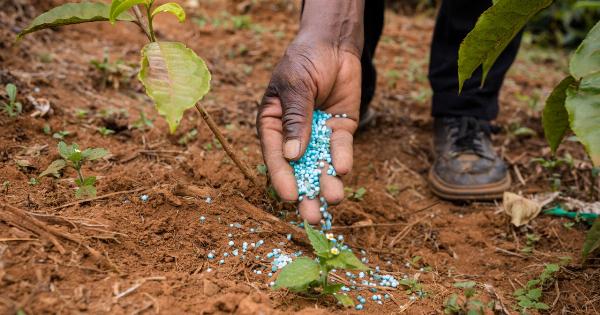When it comes to fertility, most people think about women and their reproductive health. However, recent studies have shown that men’s fingers can also provide valuable insights into their fertility potential.
Surprisingly, the length and ratio of certain fingers can serve as indicators of a man’s reproductive capabilities. This article explores the fascinating connection between men’s fingers and fertility, shed light on the science behind it, and discuss the implications it has on reproductive health.
The Digit Ratio
The digit ratio refers to the relative lengths of the index (2D) and ring (4D) fingers. It is often determined by measuring the lengths of these fingers and calculating the ratio between them.
Research has shown that this ratio can provide significant information about a person’s hormonal environment during their prenatal development, which in turn can influence their reproductive health later in life.
Testosterone and Estrogen
Before delving into the connection between finger length and fertility, it’s crucial to understand the role of hormones, specifically testosterone and estrogen.
Testosterone is the primary male sex hormone that plays a vital role in the development of male reproductive tissues and promotes male secondary sexual characteristics such as increased muscle mass and body hair growth.
On the other hand, estrogen is the primary female sex hormone responsible for regulating the menstrual cycle and supporting female sexual characteristics.
During fetal development, both males and females are exposed to these hormones. However, the levels and balance of testosterone and estrogen differ, leading to various physiological differences, including finger length ratios.
Understanding the Connection
Studies have found a link between the digit ratio and perinatal sex hormone exposure.
Specifically, a lower digit ratio (indicating a longer ring finger relative to the index finger) suggests higher prenatal testosterone exposure, while a higher digit ratio (indicating a longer index finger relative to the ring finger) suggests higher estrogen exposure.
Research has shown that men with a lower digit ratio tend to have higher sperm counts and motility, indicating improved fertility.
On the other hand, men with a higher digit ratio often exhibit lower sperm quality and are more prone to certain fertility issues.
Finger Length and Sperm Quality
The finger length ratio can provide valuable insights into a man’s sperm quality.
Several studies have suggested that men with a lower digit ratio have a higher concentration of sperm, better sperm motility, and fewer instances of abnormal sperm morphology. These factors are crucial for successful fertilization and pregnancy.
Furthermore, researchers have found that men with a lower digit ratio also tend to have increased sperm viability, meaning their sperm cells are more likely to survive and fertilize an egg.
This correlation suggests that finger length can serve as a quick screening tool for assessing a man’s reproductive potential.
Implications for Reproductive Health
The link between finger length and fertility potential can have significant implications for reproductive health assessment and treatment.
By simply measuring a man’s finger lengths, healthcare professionals can gain a preliminary understanding of his reproductive capabilities.
This information can aid in early identification of potential fertility issues and allow couples to make more informed decisions regarding family planning.
Moreover, it can help identify individuals who may require assisted reproductive technologies, such as in vitro fertilization (IVF) or intrauterine insemination (IUI), to achieve pregnancy.
Limitations and Further Research
While the link between finger length and fertility shows promise, it is important to note that it is not a definitive diagnostic tool. Finger length should be considered as just one aspect of a comprehensive fertility evaluation.
Further research is required to establish clear thresholds and guidelines for assessing fertility based on finger length.
Additionally, more studies are needed to understand the exact mechanisms behind this connection and how it may vary across different populations and ethnicities.
Conclusion
Men’s fingers hold more secrets than we might have imagined. The length and ratio of their fingers can provide valuable insights into their fertility potential.
The digit ratio, influenced by prenatal hormone exposure, can serve as an indirect measure of a man’s reproductive health. While finger length alone cannot determine fertility, it can contribute to a comprehensive evaluation and assist in identifying potential fertility issues.
As research in this area continues to unfold, finger length assessment may become a valuable tool in routine fertility evaluations, ultimately enhancing reproductive healthcare for both men and women.





























